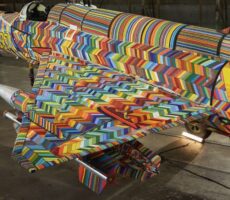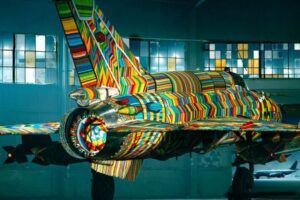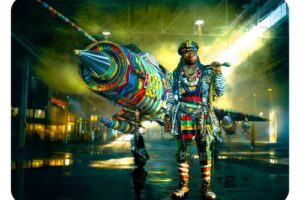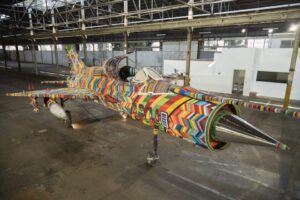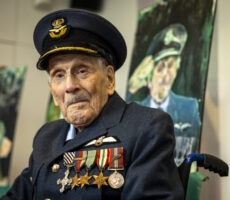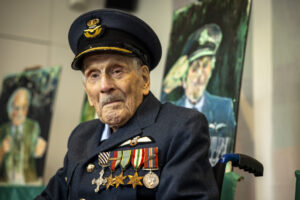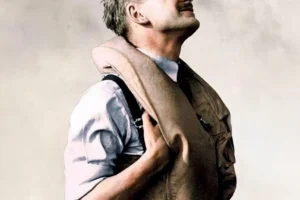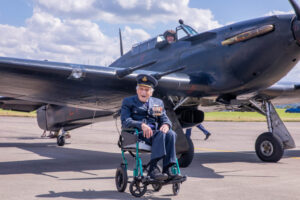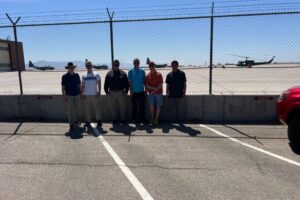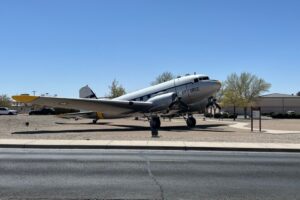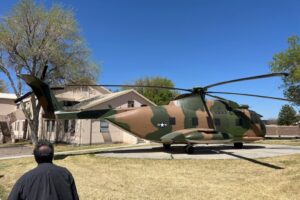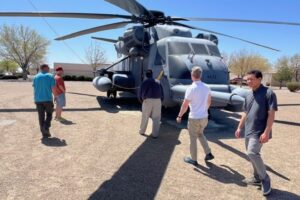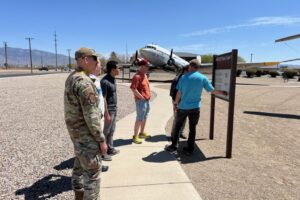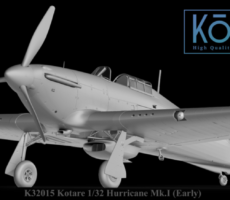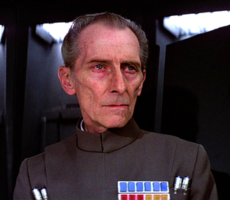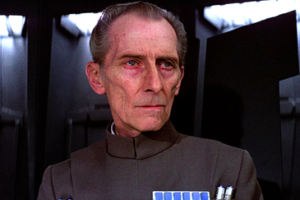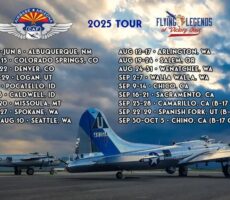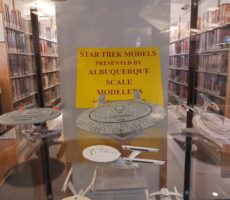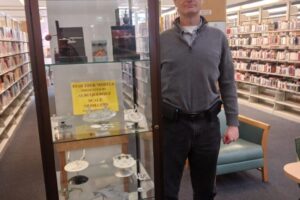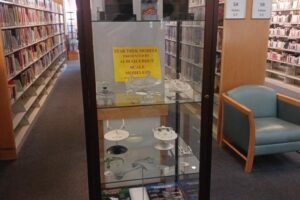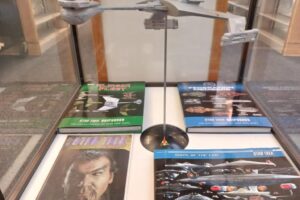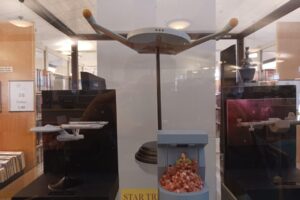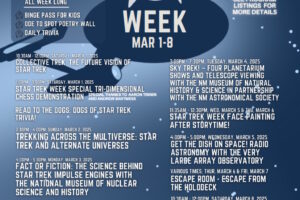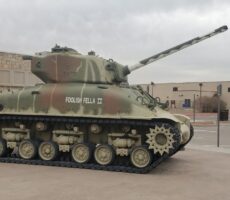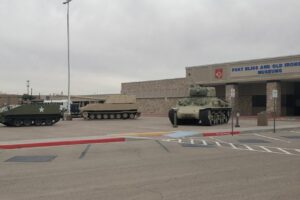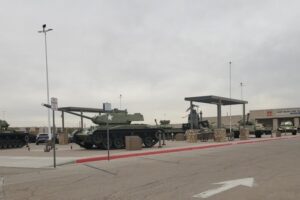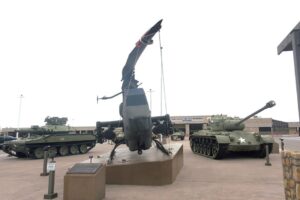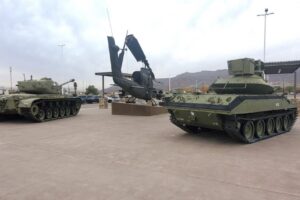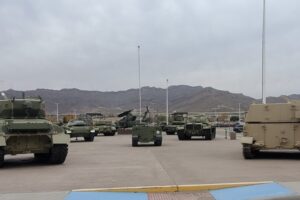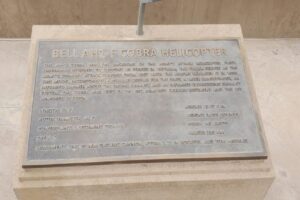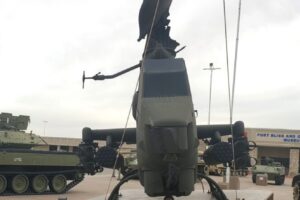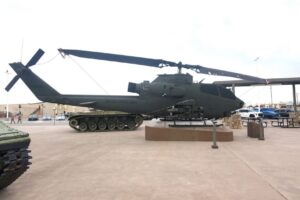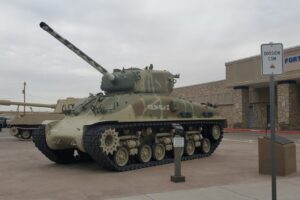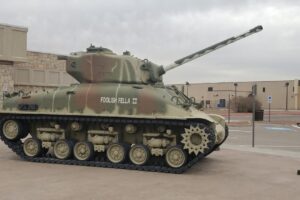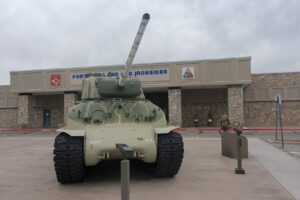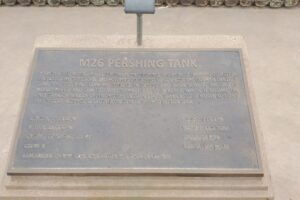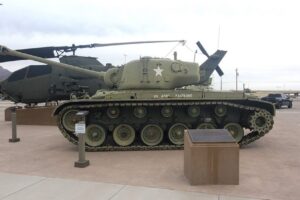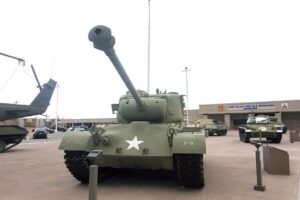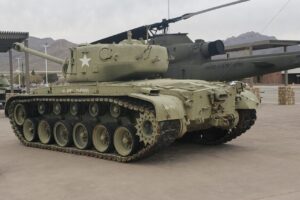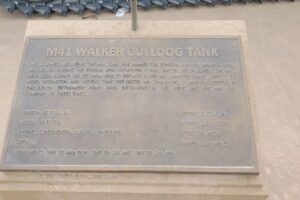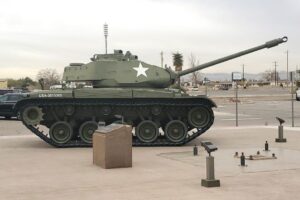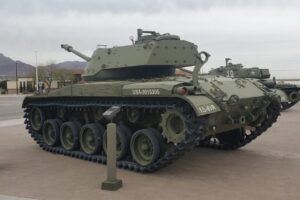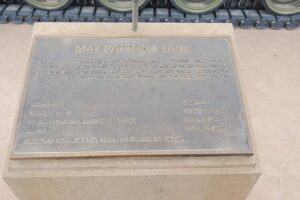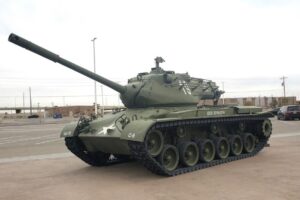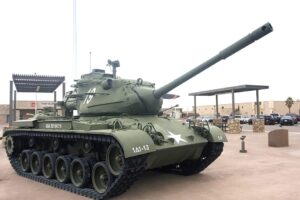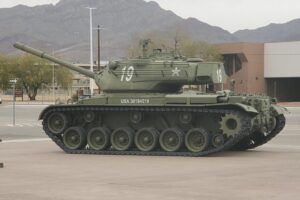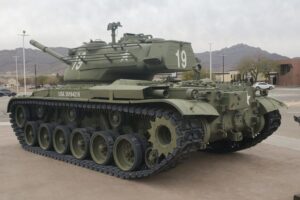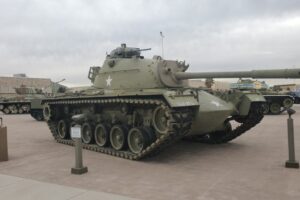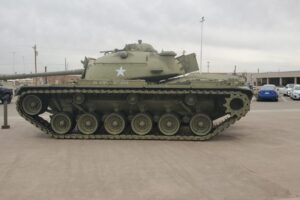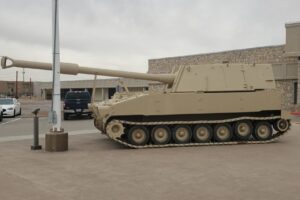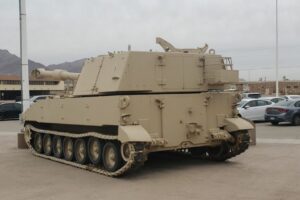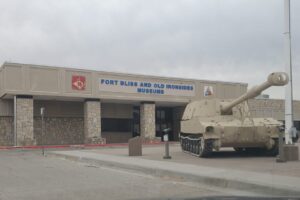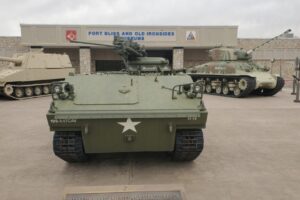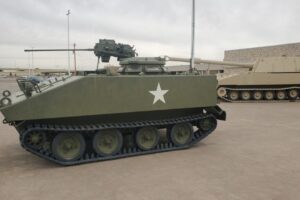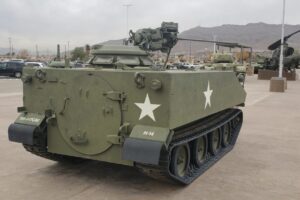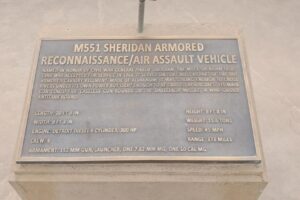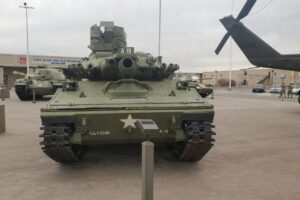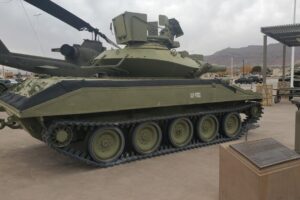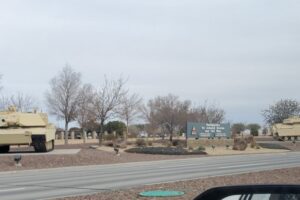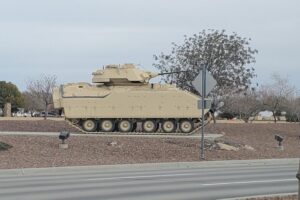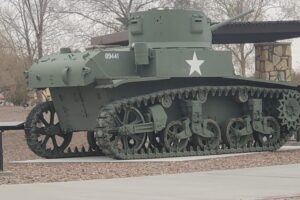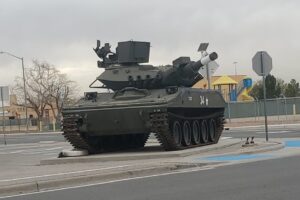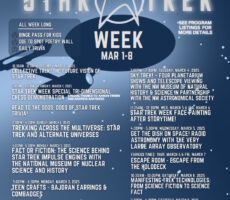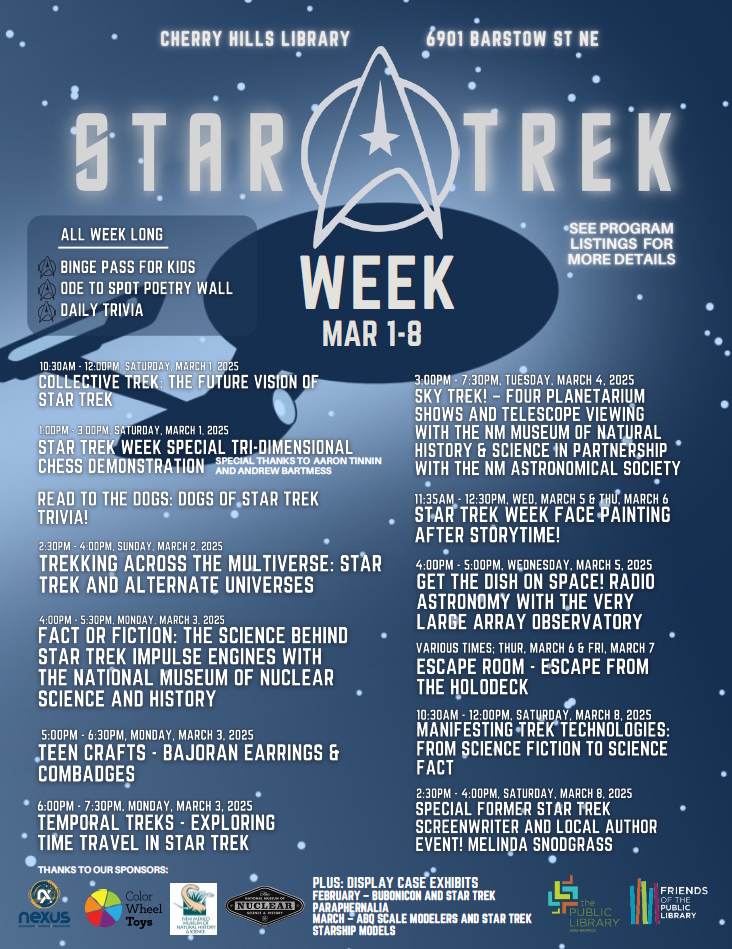On April 11th, 2025, ASM members Frank Randall, Tim Wood, Patrick Dick, Scott Jaworski, John Tate, and AJ Tate visited the Kirtland AFB flightline of the 58th Special Operations Wing (SOW), a thank-you for ASM members who built or helped provide models to the 58th SOW’s award banquet on March 13th. Our able guide was Benjamin Flickinger, 1LT, USAF, our point-of-contact for the model-build effort.
Our first stop was a hangar containing several CV-22 Ospreys. These aircraft were painted an overall dark gray with light gray markings. One of these aircraft was getting a wash and it was easy to see why, since these training aircraft see a lot of use, as evidenced by the dirt on the sponsons of an Osprey we were allowed to board. Contrary to the instructions on most model kits, the interiors of these Ospreys were flat black. Funny thing about this hangar, a loudspeaker was playing tropical bird calls, to scare away pigeons- with the splashing water and bird calls it sounded like a tropical rainforest.
Next stop was a helicopter hangar with veteran UH-1N Hueys; these helos had a color scheme similar to the 1980s Euro I scheme, with medium green, Euro I green and a splotch or two of gray. As with the Ospreys, they had black interiors. A real treat was seeing a brand new HH-60W “Whiskey” Pave Hawk, with a segmented, black national insignia not seen before. The Whiskey version has modified exhaust vents to reduce its infrared signature. Gun mount maintenance work was being done on the Whiskey, which meant the port .50 cal machine gun and the starboard minigun were dismounted and lying on the hangar floor. Impressive that trusty .50 cal has been a U.S. aerial machine gun for almost 90 years.
Leaving the helo hangar, we stopped to see a MC-130J on the tarmac and had a chance to see the interior of the fuselage and the cockpit. The MC-130J had a metal shield applied to the port lower front cockpit window opening, since replacement windows were difficult to get.
The finale was an AC-130J gunship, named Phobos after the Greek god of fear and panic. These gunships mean business, with a 30mm cannon forward, and a 105mm cannon aft. We had the opportunity to enter the fuselage and see the two guns, separated by a large console complete with gamer-style controllers and screen banks. It was dark inside, with flat black being the primary interior color, but it came to life when the power was activated and all manner of lights flashed on. The AC-130J is a big aircraft but with the gun stations and control console it didn’t seem very big inside at all.
There was no flightline photography allowed (for obvious reasons given the mission of these aircraft) but we had an opportunity to take images of static legacy aircraft of the 58th SOW parked at a nearby location off the flightline.
The flightline tour was a real treat for modelers and a fine courtesy extended to ASM members for our scale model work in support of our neighbors, the 58th SOW. Some of these aircraft will be on public display as part of the Air Fiesta airshow at the end of May, so if you have a chance they will be well worth visiting.
